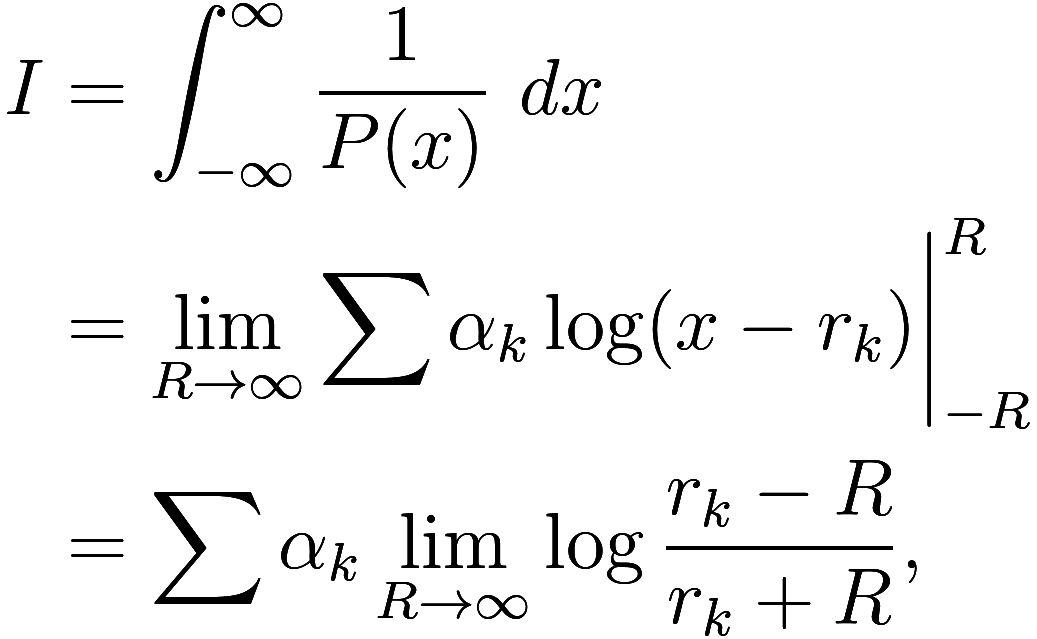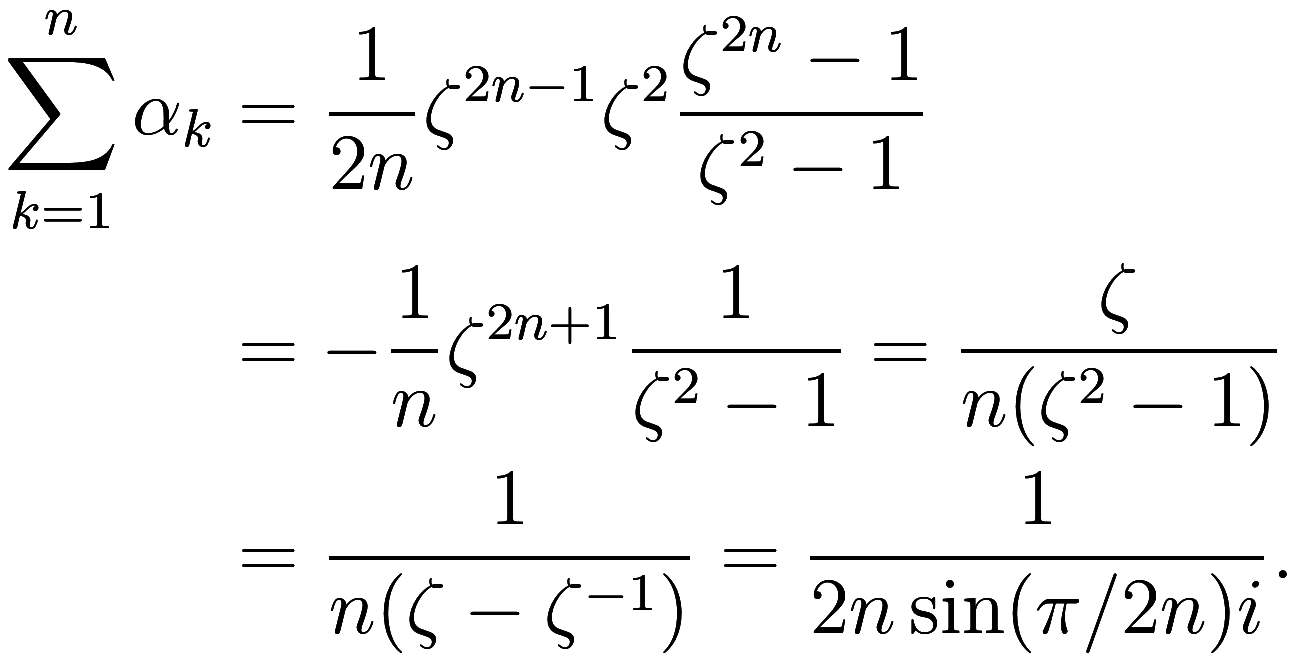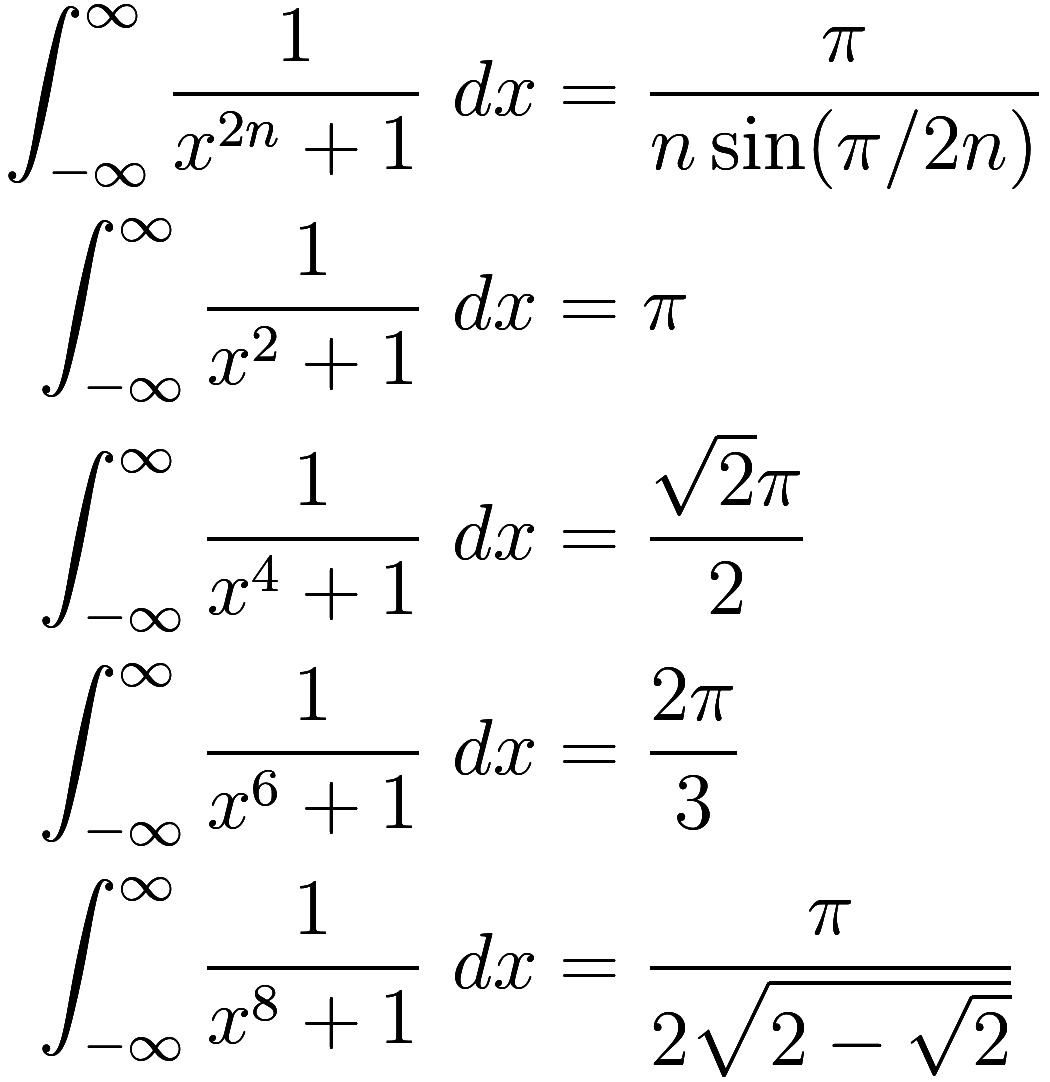Unlike differentiation, there is no systematic method for integrating any function given in closed form, but rather a library of calculation techniques (i.e. a calculus) that can be applied ad hoc to specific functions. (Although see also the Risch algorithm for a close miss.)
As a simple example, consider
![]()
which can be solved through various classical techniques, or verified
by computing the derivative of . In fact we’ll find a use for this
integral in an upcoming entry. However the integral
![]()
is less obvious, as the corresponding indefinite integral is not easily solvable.
I saw this latter integral presented as an example that is amenable to the use of contour integration methods. However, my lack of familiarity with such method leads me to favor the use of partial fractions for this problem. But when I worked through the problem with partial fractions, it became clear that here the two techniques are really the same in disguise.
Let’s walk through the steps of computing
![]()
using both partial fractions and contour integration. Here we take
to be a monic polynomial of degree at least 2,
with no repeated roots and no real roots, although in general the
following steps equally apply to any quotient of polynomials. Let
![]()
We need to find such that
![]()
this is called the partial fraction decomposition of . Multiplying both sides by
gives an equality of polynomials in
that needs to hold for all
; we can regard this as a system of
linear equations with
unknowns. However, the easier way to solve this is
to evaluate both sides at
, as that makes all but one term on the
right go to zero. We get
![]()
(which you can verify by expanding ). These
are the residues of
at each of its poles.
Now

so it remains to calculate the limit of this log expression. As we
are taking log of complex numbers, we need to be careful to choose a
branch cut of log that is not crossed by the line from to
. The standard choice for the branch cut,
the negative real axis, works for this purpose as we have specified that
none of the
are real. (If any of the
are real we would need to deal with integrating
through a singularity in
.)
We know that
![]()
so we need to know the magnitude of
for large
, and its angle
. In the limit of large
, its magnitude goes to 1. The angle depends on
whether the imaginary part of
is positive. If
, then the angle of
approaches
; otherwise
. Thus we have

This can be simplified slightly: let us show that the sum of the
residues is zero. In the next section we will see
an immediate way to prove this. For now, note that in our equation
![]()
that is the coefficient of the
term on the left, and
is the coefficient of the
term on the right. Then it follows
that
![]()
We can calculate using the residue
theorem, which states that
![]()
where is a meromorphic function and the sum on the
right is of the residues of
at each of the poles inside of the contour. The
definition
of residue is the unique value such that the difference
![]()
has an antiderivative in a small punctured disc around . (It is fine if
has a pole of order higher than 2, as integrating
only creates a branch cut when
exactly. Thus the residue is the coefficient
of the
term.)
The residue theorem is a direct consequence of Cauchy’s
theorem, which states that the contour integral of a holomorphic
function is zero. Suppose we want to use this to compute a contour
integral that goes around some poles. Then by Cauchy’s theorem we can
write ![]() as a sum of contour integrals, one for each
pole, each of them going in a circle of arbitrarily small radius around
that pole. Then, by definition of residue, we can replace these
integrals with ones of the form
as a sum of contour integrals, one for each
pole, each of them going in a circle of arbitrarily small radius around
that pole. Then, by definition of residue, we can replace these
integrals with ones of the form that can be computed easily to
give the desired result.
So what are these residues for the function ? Unsurprisingly, the residue of
at
is
, as can be seen from the equation
![]()
together with the definition of residue. Then if we choose a contour to integrate around, the residue theorem tells us that
![]()
where the sum is taken over such that
is inside of the contour.
It remains to choose a suitable contour. First, imagine taking a
large circle of radius around the origin, with
![]() , and let
, and let ![]() be the value of the
integral.
be the value of the
integral.
In the limit , the length of the path being
integrated along grows like
, but the integrand
shrinks like
![]() , so
, so . But by the residue theorem,
only depends on which poles are inside the
contour, which is independent of
, so
. Therefore
![]()
where the sum on the right is over all . This gives us again our result that the
residues have a sum of zero, which we needed in the previous
section.
Now we return to computing and choose a semicircular contour, running along
the real axis from
to
, and then following a semicircular arc in the
upper-half plane; let
be the value of this integral.
is a sum of two components, for the two parts
of the path being integrated along. As with
, the semicircular arc component goes to 0 in
the limit of large
. And again as before, the value of
is independent of
for large
, so
![]()
Then we compute with the residue theorem, giving
![]()
where the sum is over roots in the upper-half plane, in agreement with the
result of the computation with partial fractions.
Step-by-step, the two methods involve nearly the same operations.
With contour integration, we took advantage of Cauchy’s theorem and that
is holomorphic to choose contours that are
convenient instead of being committed to integrating along the real
axis. This made it trivial to find the sum of the residues, and also
simplified the task of integrating the functions
. When integrating along the real
axis, we had to do some geometric reasoning about whether the imaginary
part of
is positive or negative, but using Cauchy’s
theorem we can instead integrate in a circle around
, which was elided as “easy” in our sketch of
the proof of the residue theorem.
Otherwise, the two methods are identical. I was surprised that to calculate the residues by directly applying the definition of “residue” as given on Wikipedia requires first finding the partial fraction decomposition. Of course, while there are various theorems that hasten the calculation of the residues in practice, these are equally applicable to hastening the partial fraction decomposition.
Let us work through the specific example ![]() . If
. If is the primitive
th root of unity
, then the roots of
are
for , of which the first
have positive imaginary part. As
![]() , we get
, we get
![]()
so

Finally we get

Follow RSS/Atom feed for updates.